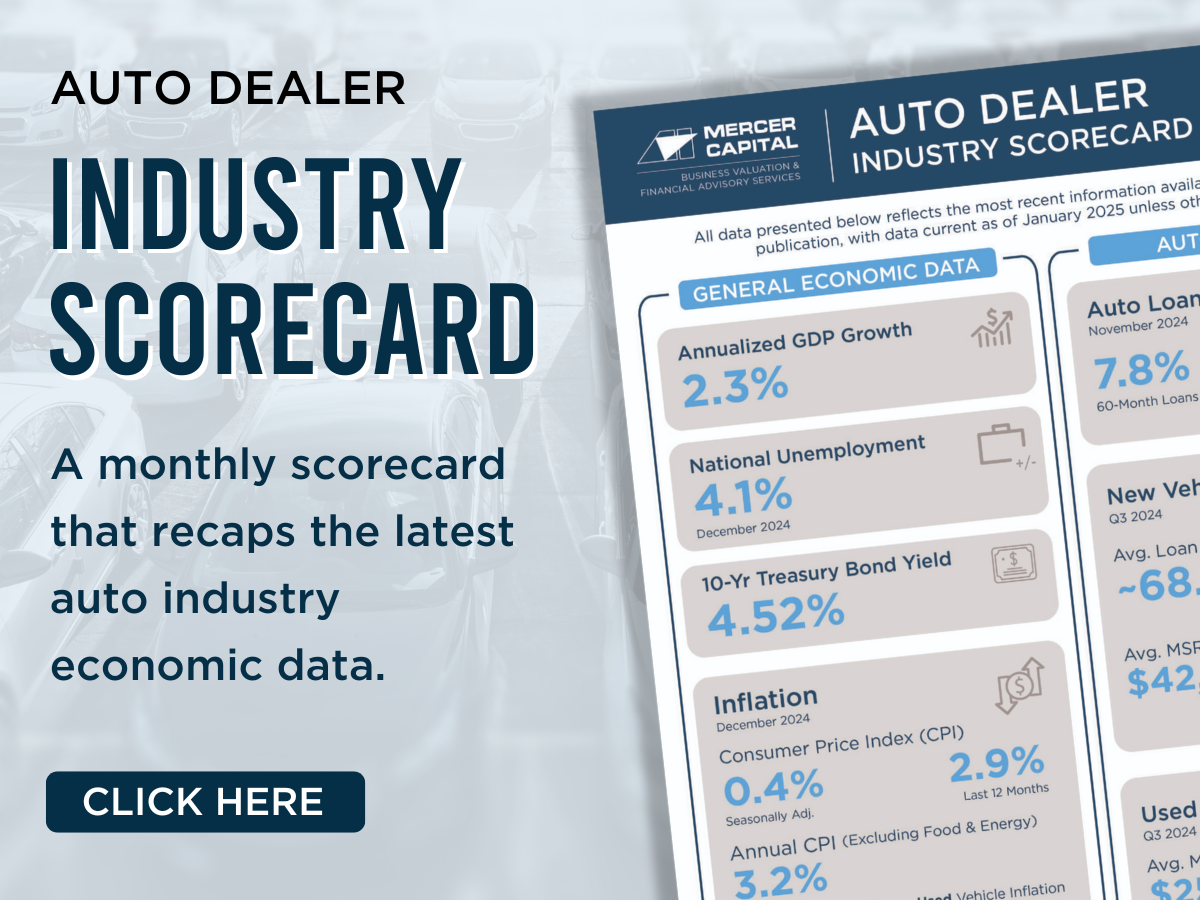Inventory Management Strategies for Franchised Auto Dealers
Unlike used car dealers who primarily rely on auctions and trade-ins, new vehicle dealerships get an “allocation” of inventory from their original equipment manufacturer (“OEM”). Car makers initially began the franchise distribution model to focus on their core competency: building automobiles. Sales to consumers are executed by dealers, who are allocated the OEM’s annual production. Unlike franchisees in other industries, auto dealers have limited control over how many nationally manufactured units they will ultimately receive. It is incumbent upon auto dealer principals to forecast and strategize depending on the prevailing type of inventory environment and the level of allocation imposed upon them by their OEM(s). Allocation can be based on past sales performance, market demand (local, regional, or nationwide), and the dealer’s overall relationship with the manufacturer.
During the chip shortage, supply was down across the board, meaning lower allocations for even the highest-performing dealers. In more “normal” times, there is still considerable cyclicality. Automakers want to build and ultimately sell as many vehicles as they can. This can lead to an inherent struggle between dealers who may not be allocated enough vehicles to satisfy their local market demand and the manufacturers who make the vehicles. On the flip side, sometimes market demand is lower than anticipated for certain models (consider the current supply and demand imbalance for EVs). Dealers can feel the squeeze from their OEMs to take vehicles even if they know they aren’t likely to sell at a reasonable (or any) profit. In an effort to stay in good graces, sometimes a dealer will take on less profitable or slower-moving inventory in hopes the allocation tides will eventually turn in their favor.
While dealers cannot control their allocation from OEMs, they can and should respond with the most appropriate sales strategy for the inventory they receive. There are two main approaches available to dealers: maximize price or volume. The key is balancing these strategies to optimize both sales and profitability. We discuss the pros and cons of each below.
Turn and Earn
What is the Turn and Earn Strategy? The Turn and Earn strategy maximizes inventory turnover by quickly selling cars to “earn” more allocations from manufacturers. Dealers in this environment strive to sell “in-demand” vehicles quickly to keep inventory levels low and receive more desirable models from the manufacturer in return. This is crucial for in-demand vehicles, which can drive sales volumes and customer satisfaction for consumers who know exactly what model they want when they visit the dealership.
Advantages
- Lower financing costs: Less vehicles on the balance sheet incur less interest expense on floorplan This helps to control costs and reduces risk from large interest rate movements.
- More allocation of in-demand models: Selling these types of models quickly will typically earn more allocation of those models going forward. A good example of this is a dealership focused on pickup trucks in a rural market.
- Potential for profit margin maximization (in certain environments): High-demand vehicles can be sold at a premium when inventory for those models is relatively scarce, further boosting profitability when paired with lower floorplan This is not always the case, as heightened pressure to chase volumes could result in aggressive discounting in a contrasting inventory environment.
Challenges
- Cannot precisely control inventory: Dealers need to forecast demand accurately and may risk running low on inventory if units turn quicker than planned. This can potentially cause lost sales if they can’t meet customer demand quickly.
- Heightened pressure on the sales team (in certain environments): This strategy can pressure sales teams to move units quickly, which may sometimes lead to price reductions or aggressive sales tactics, reducing margins. This is not always the case, as in-demand vehicles can demand premium pricing in tight inventory environments.
Large Floorplan Strategy
What is the Large Floorplan Strategy? Holding a larger balance of floor-planned inventory on the balance sheet involves financing a more extensive stock of vehicles using floorplan loans. By holding more vehicles, dealers offer a broader selection to customers, which can improve foot traffic and increase the chance of sales. Sometimes, manufacturers even offer incentives for dealers to hold more inventory, including rebates and promotional support.
Advantages
- Customer satisfaction: A larger inventory balance provides customers with more options, potentially leading to higher sales as the dealership can meet a broader range of immediate needs. If dealers don’t have a specific model and the dealership across the street does, most buyers will simply do business with the dealership prepared for the immediate sale.
- Rebates and promotional support: Floorplan credits were designed to mitigate the interest expense burden for dealers by offering a modest payment upon selling a vehicle within a particular (usually short) time frame. OEMs offer this credit to encourage fast-paced sales of units and high inventory turns. If sales happen very quickly, these credits can provide the dealership with expense mitigation at worst or higher profit at best.
Challenges
- Higher financing costs: Since floor-planned inventory is financed, holding larger stocks for longer periods can significantly increase the interest costs. Dealers may also face depreciation if vehicles don’t sell quickly, further cutting into vehicle equity.
- Slower turnover for certain units:With more cars on the lot, inventory turnover might slow down, tying up capital in unsold vehicles while affecting cash flow. This is a risk for dealers experiencing all levels of allocation from their OEM, but larger floor plan loans exacerbate this risk.
Conclusion
An auto dealership’s inventory management is a crucial part of its operations and significantly impacts the strength of the balance sheet, margin health, and profitability. All of these factors can impact the value of an auto dealership, as a qualified appraiser would consider all relevant attributes of dealership operations during the valuation process. For example, a dealership that manages inventory very well might earn more profit margin than an underperforming dealership with similar unit volumes. Furthermore, a dealership that manages inventory well has less downside risk related to interest expense and potential write-downs for dated models.
At Mercer Capital, we perform valuations of auto dealerships for owners and advisors all around the country for a variety of purposes. Additionally, we follow the auto industry closely to stay current with market trends in dynamic times such as these. Contact one of our professionals today to discuss how these trends may be affecting the market for your dealership.
 Auto Dealer Valuation Insights
Auto Dealer Valuation Insights 








